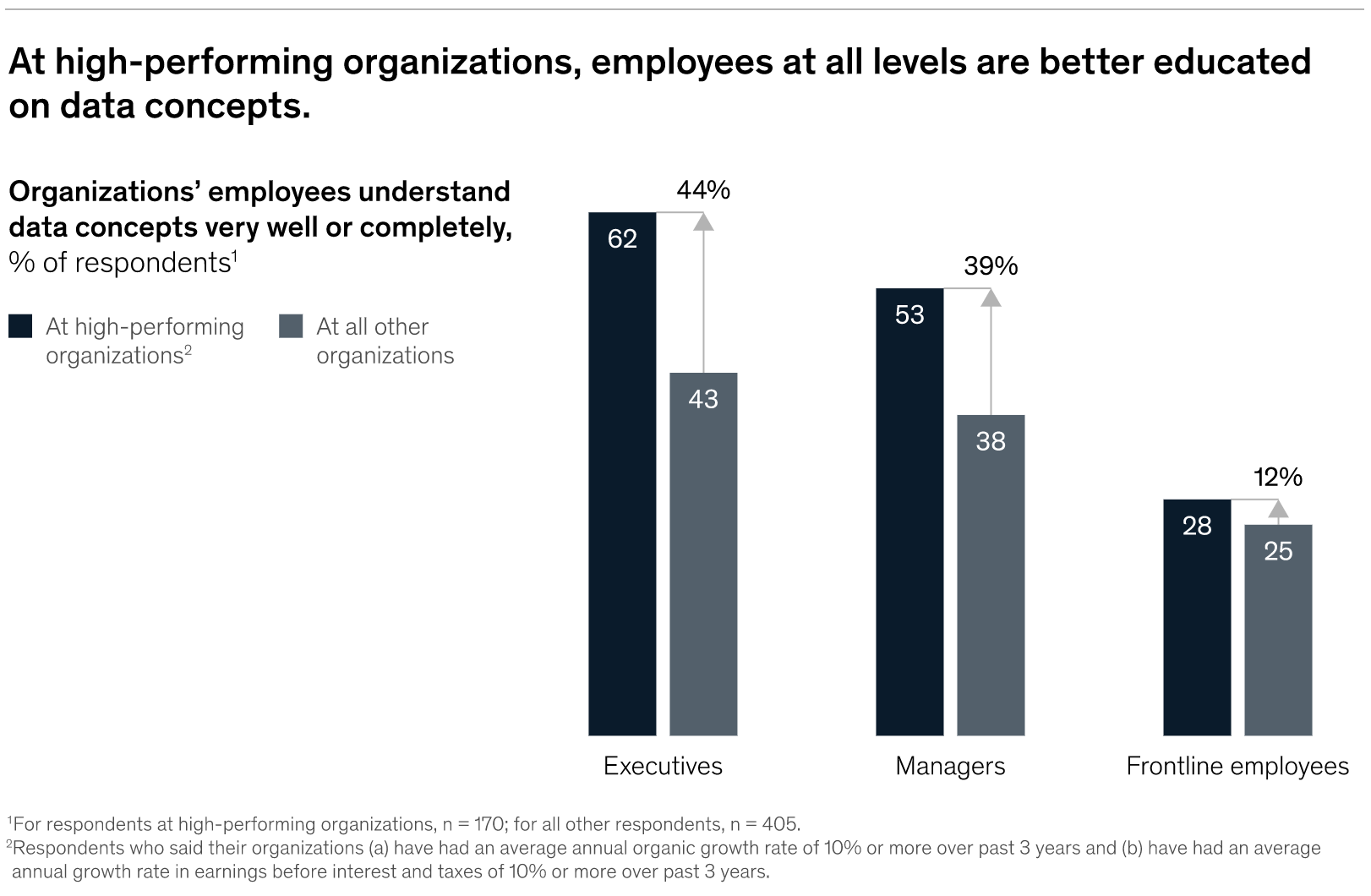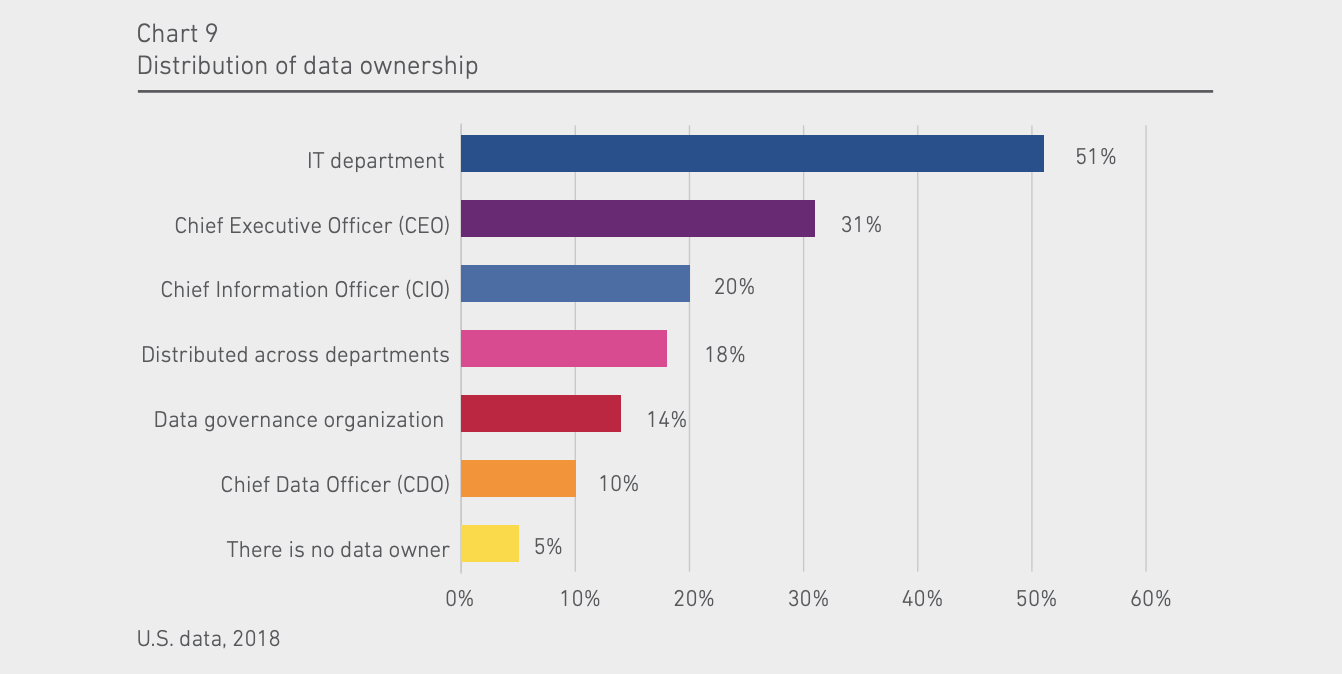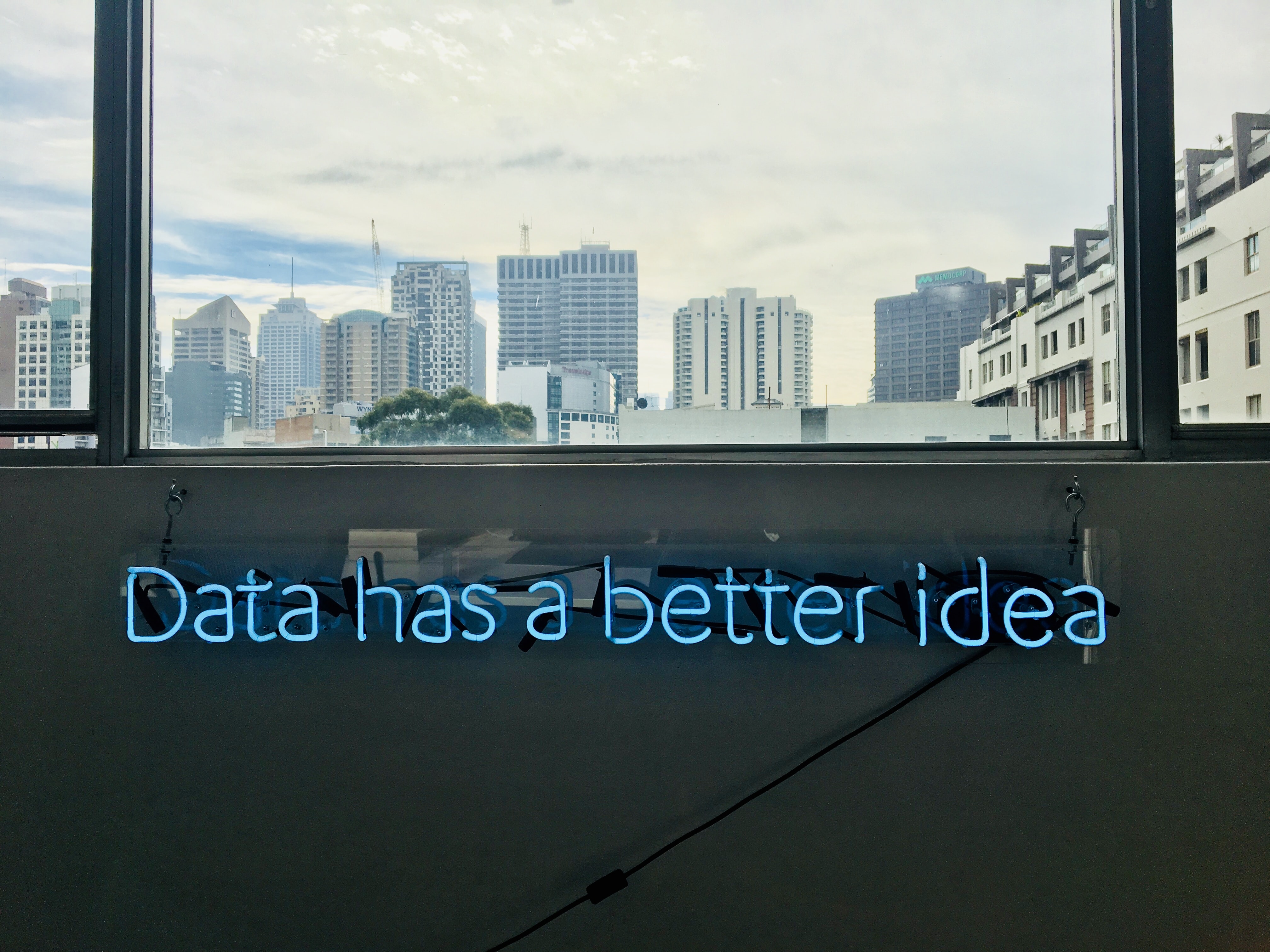In the last post1, we looked at five challenges beyond hiring the right data science talent that can get in the way of organizations’ attempts to leverage data successfully to solve their data problems.
Here, we look at six fundamental operational shifts that organizations must make to develop data-driven decision-making across the enterprise:
1) Rapidly demonstrate the value of data
Securing buy-in and support from the C-suite and other levels of employees is crucial for the success of data initiatives. This depends on how quickly the large data organization (including the data science, analytics and data engineering organization) is able to demonstrate the value of data-driven approaches. After all, nothing works better for overcoming scepticism and objections than demonstrable results.

Thus, it’s important to look for quick wins that can get the ball rolling. This also means that the complexity of data initiatives should be an iterative process, as trying to boil the ocean often results in frustration and stalled projects.
Finally, ensuring that data initiatives are oriented towards both customers and employees of the organization will more likely secure broad-based support, as the employees will be able to see that their jobs are becoming more effective and efficient.
2) Empower employees at all levels with data
When data skills are siloed (residing with a select group of individuals), that often results in bottlenecks and ad-hoc processes. On the other hand, when data science is democratized (accessible to everyone and integrated with the organization’s processes), employees won’t feel overwhelmed by the large volumes of data generated by the business, and will know what data and insights to focus on to make the right decisions.

According to McKinsey, respondents at high-performing organizations are 65% more likely to report making data and self-service tools accessible to frontline employees.2 Similarly, such organizations are much more likely to report better education in data concepts of employees at all levels.

Source: 2
Importantly, democratizing data and empowering employees also means defining clear frameworks of decision-making rights and accountability. This will ensure that units of the business focus on integrating data into their day-to-day work and do not simply ignore the insights generated by data and analytics initiatives.
3) Empower teams with user-friendly and self-service tools
Empowering employees and democratizing data critically depends on providing them with the necessary tools and infrastructure to quickly and easily access data and insights. Providing self-service tools takes the pressure off core data teams to focus on more fundamental transformational efforts, without being inundated by reactive day-to-day tasks. Typically, when there are additional people involved, handoff, context, and iterations all inject delays into the overall process, while also increasing the chances of the process becoming highly political.
Shortening time to insight also ensures that organizations are better able to respond to changes in real time and improve business agility. This requires creating greater efficiencies in the overall process.
Data and analytics tools should be user-friendly and customized to the needs of different units of the business. With the explosion of data and analytical tools, technologies must be chosen with a strategic focus on speed and convenience. This is an area where we can bring our expertise to bear.
In particular, additional thought is necessary with transitions to cloud or hybrid environments to realize self-service analytics. While some cloud-based offerings offer robust product and business process support, change control for business processes must be thought through to drive outcomes for the business.
4) Monitor data reliability and prevent data downtime
Data-driven decision making depends on trust in the accuracy, completeness, and correctness of data. However, when data initiatives involve multiple data sources, lengthy pipelines running across multiple infrastructures, applications, or data layers, and multiple user teams, the chances of data quality and integrity being affected are manifold.
Hence, data observability is necessary for enterprise-wide data initiatives. Building up from application observability, data observability provides a granular view of the movement of data across multiple systems rather than within a single application and system component. In other words, data observability ensures the quality and integrity of data as it moves through the multiple applications and infrastructures populating the enterprise ecosystem.
The ability to troubleshoot and monitor flows of accurate data throughout is particularly challenging in hybrid cloud environments, as multiple blind spots can exist throughout the ecosystem. Only with rigorous monitoring and alerting in place can consumers of data be confident in driving data-driven decisions.
5) Develop effective lines of data ownership
Many data-related changes arise because of unclear or inefficient policies of and improperly defined data ownership. As 2018 research by Experian shows, legacy processes of data management by IT continue to influence understandings of data ownership in many organizations, with over half of surveyed organizations stating their data is owned by IT.

Source: 3
However, there is recognition that centralizing data management in the hands of IT leads to inefficiencies that hamper organizations’ agility. The growing recognition of data as an asset is leading to calls for data ownership by the business. However, decentralizing ownership among business units can lead to problems if clear rules regarding data governance and quality are not in place. One increasingly popular solution is for analytics to be strategically controlled by a Chief Data Officer. Ideal solutions include business teams rolling up their sleeves and taking ownership of data and/or data producers owning the data produced to prevent cases of everyone owning the data without anyone actually taking ownership of it.
6) Build a culture and community around data
Building a data-driven organization also requires a thoroughgoing cultural transformation of the organization. This requires beginning at the top with leadership that demonstrates that decisions must be anchored in data. Thus, inclusion of data leaders in the organization’s top leadership, as well as the demonstrated use of data for leadership decisions communicates the right signals down the line. Secondly, it requires that organizations do not pigeonhole data science teams from the rest of the business, and work to break the boundaries between data science and business teams. This allows data science teams to get the necessary business/domain grounding, while also ensuring that the business units acquire a more data-driven view. This can be achieved by building flexible partnerships between centres of excellence and functional areas and lines of business.
A data community typically involves multiple players, such as:
a) Product/Business Teams – Teams building experiences and rolling out features. These teams are central for driving the insights-to-outcomes cycle, for influencing the impact of data on customer experience, as well as for the production of customer-related data.
b) Engineering Teams – Teams coding and rolling out experiences that generate data. These teams take charge of production infrastructure and data pipelines within the organization.
c) Analytics & Data Science Teams – Teams using the data. While their role is often seen as focused on modelling data, generating insights and making predictions, the current state of data pipelines in many organizations mean that these teams also take charge of data wrangling.
d) Data Product Owners – Teams that are responsible for the data lifecycle, managing projects, contributing to building data roadmaps, and influencing resources across data governance, data engineering and product management.
Some final thoughts
Scaling data initiatives to the level of the enterprise requires trust in the data, commitment to using data in day-to-day business processes, development of data skills and talent, collaboration across departments in data initiatives, and the growth of a data-driven culture and mindset. All of these requisites cannot be fulfilled simply by hiring one or more data scientists or analysts. They require a more thoroughgoing organizational commitment to transformation. Successfully achieving this transformation depends on effectively bringing people, processes, and technology.
- https://www.datamatrix.ai/blogs/becoming_data_driven_2021_more_than_hiring_data_scientists/ [return]
- https://www.mckinsey.com/business-functions/mckinsey-analytics/our-insights/catch-them-if-you-can-how-leaders-in-data-and-analytics-have-pulled-ahead# [return]
- https://www.experian.com.vn/wp-content/uploads/2018/02/2018-global-data-management-benchmark-report.pdf [return]








